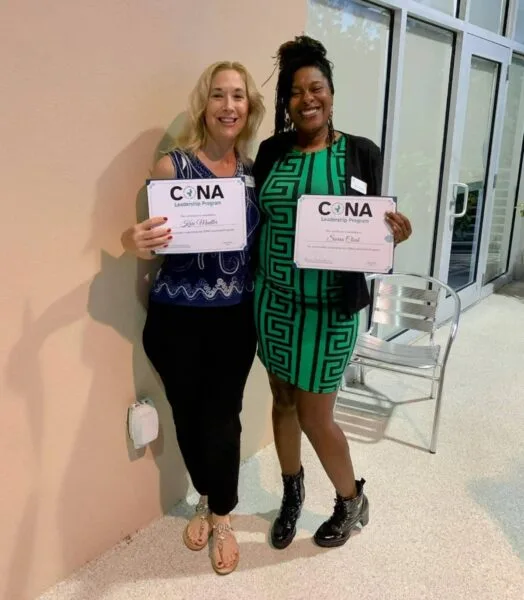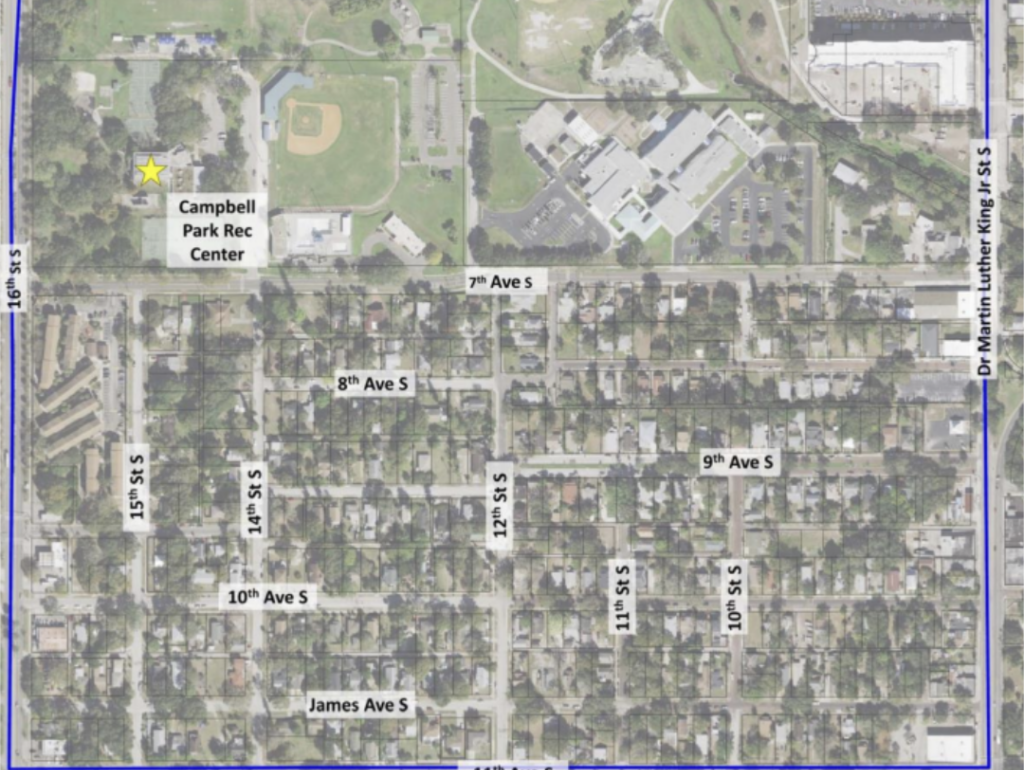An oft-overlooked South St. Petersburg neighborhood’s residents are working together to highlight the community’s potential and overcome persistent hurdles.
Franklin Alves believes Campbell Park is on the precipice of a “remarkable transformation.” He looks at plans to reconnect the underserved area, an ongoing project to enhance the Booker Creek Bridge on Dr. Martin Luther King (MLK) Jr. Street South and the nearby Historic Gas Plant District’s redevelopment as catalysts for positive change.
Alves called three vacant commercial spaces at 811, 901 and 923 Dr. MLK Jr. St. S. “symbols of opportunity.” However, he noted that the properties have remained on the market for over 18 months.
“There are just so many cool things that I feel are being missed by people who aren’t familiar with the neighborhood … ,” Alves said. “There’s not another neighborhood with this many businesses for sale in it.
“It’s such a major corridor, and them (the properties) sitting for so long and people not willing to invest in there – it’s just kind of a part of a bigger theme of the neighborhood.”
Campbell Park sits between 16th St. South and Dr. MLK Jr. St. to its east and west, respectively. It also spans north to south from 5th to 11th Avenue.
Alves noted the area boasts an expansive park with several amenities, a greenway and neighborhood shops reminiscent of more affluent areas north of Central Avenue. However, he said Campbell lacks similar attention and city infrastructure.
Local healthy food options remain scarce, and Alves would “love” to see a small grocer or deli fill one of the vacant businesses. He attributed some of the economic development hurdles to past stigmas.
In October, Mayor Ken Welch, at Campbell Park, unveiled plans for reconnecting the Historic Gas Plant District. A recently submitted $1.2 million U.S. Department of Transportation grant would fund the planning phase.
According to city reports, nearly 4,000 people – and 2,700 African American families and businesses – were displaced when I-175 bifurcated neighborhoods in the late 1970s. The project would increase walkability, reallocate one-way street lanes and determine the interstate’s future.
Alves stressed the importance of interconnectivity to quality of life. However, he believes city officials find local funding to improve other areas rather than waiting on federal awards.
“So, it’s a little unfortunate that it has to go through a grant process and all these other hoops through a federal level,” he added. “If you drive from MLK north … it’s got the protected bike lanes and all this really great infrastructure that helped develop a very similar neighborhood just north of us.”




Campbell Park offers expansive greenspace and recreational activities in Tropicana Field’s shadow. Photo: Shaquille Lashley.
Residents in the predominantly Black neighborhood created an official plan to increase safety, spur economic development and unite the community. The city council approved the initiative earlier this year.
However, Alves and fellow resident Kari Mueller noted that city officials have yet to adopt the plan’s recommendations. They said many previous issues, like poor traffic management and illegal dumping, persist.
“Whenever we need help from the city, or sanitation or law enforcement, it just seems like it’s so difficult to get the help we need,” Mueller said. “If we could just get the neighborhood plan started, it would improve everything.”
Councilmember Gina Driscoll represents Campbell Park. She said multiple affordable housing projects and the Booker Creek Bridge expansion underscore the city’s local investment.
Driscoll said the bridge’s enhanced pedestrian walkway would increase connectivity between the neighborhood and nearby Roser Park. She believes business owners will soon notice the area’s opportunities.
Driscoll said the recently approved neighborhood plan – the city’s first since 2009 – would take time to implement. She said improvements to nearby 18th Avenue South are ongoing and thinks transportation officials will turn their attention to Dr. MLK Jr. Street once the Booker Creek Bridge project concludes.
“We also want to keep in mind that, eventually, that part of MLK Street is going to be two-ways,” Driscoll explained. “We’re going to have that conversion that could mess things up.”
She called the $6.5 billion Gas Plant redevelopment a “foundation” for Campbell Park’s growth. Driscoll said its ripple effect would promote additional shopping and dining opportunities and foster a more complete neighborhood.
Residents are doing their part. Alves helps with technical issues and advocacy, and Mueller compiles information on food assistance, job training and other local resources.




Kari Mueller (left) and Sierra Clark recently started the Southside Community Association to help provide local resources and build positive relationships throughout the area. Photo: Facebook.
Mueller also distributes poinsettias during the holiday season. She said the tradition, now in its third year, “gives us a way to connect with some of our residents who have lived here longer term, and gets them to feel more comfortable about some of the new people …”
Another stakeholder helps residents navigate probate court so they can remain in their late relatives’ homes. Driscoll credited the neighborhood association for its “strong voice.”
“They’ve demonstrated that they’re willing to put in their own sweat equity to improve the neighborhood,” she added. “When you have people who care about their community, it really serves as a catalyst for progress.”




A graphic showing some of the neighborhood plan’s many recommendations. Screengrab.



